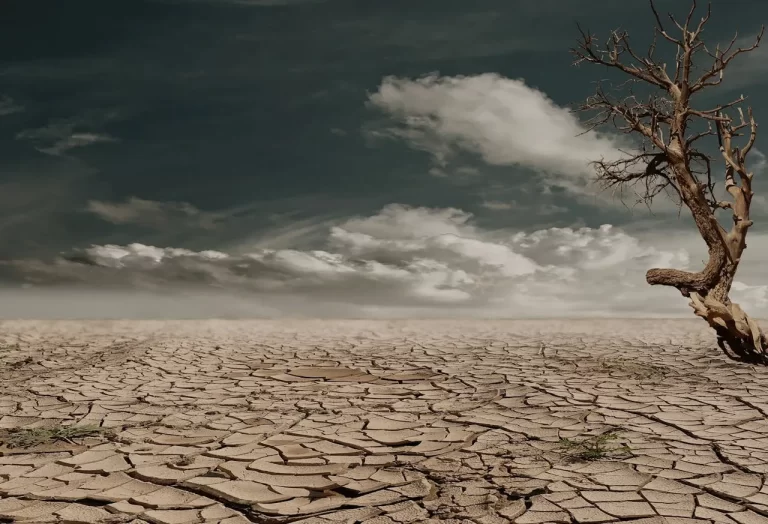Wichtige Punkte:
- Steigende Temperaturen und veränderte Wetterbedingungen treiben die Ausbreitung von durch Mücken und Zecken übertragenen Krankheiten in neue Regionen voran.
- Überschwemmungen und Wasserknappheit führen zu zunehmenden Ausbrüchen wasserbedingter Krankheiten wie Cholera und Hepatitis A.
- Abholzung und Lebensraumverlust begünstigen die Ausbreitung zoonotischer Krankheiten, darunter Ebola und COVID-19.
- Gemeinden mit geringen Ressourcen sind den größten Risiken ausgesetzt, da die Gesundheitssysteme Schwierigkeiten haben, sich anzupassen.
Mücken folgen der Hitze in die New Territories
Im Hochland Äthiopiens, wo Malaria aufgrund kühlerer Temperaturen einst selten war, beobachten Angehörige der Gesundheitsberufe nun einen besorgniserregenden Anstieg der Fälle. Eine Studie aus dem Jahr 2024 bestätigte, dass Mücken mit steigenden Temperaturen in höhere Lagen und zuvor malariafreie Zonen vordringen – selbst kleine Anstiege reichen aus, um ihr Verbreitungsgebiet zu erweitern.
Es ist eines von vielen Beispielen, die zeigen, wie der Klimawandel nicht nur unsere physische Umwelt verändert – sondern auch die Karte der Infektionskrankheiten neu zeichnet.
Der Klimawandel verändert das globale Krankheitsrisiko
Infektionskrankheiten entwickeln sich parallel zu ihrer Umwelt – und das heutige Klima und die Ökosysteme verändern sich schneller als historische Normen. In neuen Regionen treten durch Vektoren übertragene Krankheiten wie Malaria, Dengue-Fieber und Lyme-Borreliose auf. Wasserbedingte Ausbrüche nehmen zu, nachdem Überschwemmungen oder Dürren die sanitären Einrichtungen stören. Und Zoonosen – Krankheiten, die vom Tier auf den Menschen übertragen werden – sind wahrscheinlicher, da Ökosysteme gestresst und fragmentiert sind.
Nach Angaben der Weltgesundheitsorganisation (WHO) wirkt sich der Klimawandel auf eine Vielzahl von Gesundheitsdeterminanten aus, darunter saubere Luft, sauberes Trinkwasser, Ernährungssicherheit und Stabilität von Unterkünften – was die Weltbevölkerung insgesamt anfälliger für Krankheiten macht.
Umweltveränderungen, die die Ausbreitung von Krankheiten beschleunigen
Steigende Temperaturen befeuern durch Insekten übertragene Ausbrüche
Wärmere Bedingungen beschleunigen die Fortpflanzungszyklen von Mücken und Zecken – und die Replikation von Viren in ihnen. Dies bedeutet, dass Krankheiten wie Dengue-Fieber, Zika und Chikungunya nun an Orten gemeldet werden, die einst als zu kühl für eine Übertragung galten, darunter Teile Europas und der Süden der USA..
Die durch Zecken übertragene Lyme-Borreliose hat sich stetig nach Norden bis nach Kanada und nach Westen über die USA ausgebreitet und verfolgt dabei die sich erwärmenden Temperaturzonen genau. A 2025 Lancet Countdown Analysen ergaben, dass das klimadefinierte Übertragungspotenzial von Dengue-Fieber in Lateinamerika seit den 1950er Jahren um fast 66% gestiegen ist, was auf steigende Temperaturen und veränderte Niederschlagsmuster zurückzuführen ist. Diese Bedingungen erweitern den Lebensraum der Mücken und erhöhen das Risiko von Ausbrüchen in Regionen, die einst als risikoarm galten.
Extreme Wetterereignisse verstärken Bedrohungen durch Wasser
Starke Regenfälle und Überschwemmungen überfordern Abwassersysteme, verschmutzen Süßwasserquellen und beschleunigen die Ausbreitung von Krankheiten wie Cholera, Hepatitis A und Leptospirose. Besonders gefährlich sind diese Bedingungen in Regionen mit begrenzter Infrastruktur.
In Mosambik und Bangladesch beispielsweise führen Überschwemmungen häufig zu einem Anstieg von Durchfallerkrankungen und Magen-Darm-Erkrankungen, wie nach dem Zyklon Idai und anderen extremen Wetterereignissen zu beobachten ist. Auf der anderen Seite können Dürren Menschen dazu zwingen, sich auf unsichere Wasserquellen zu verlassen – was zu Krankheiten durch kontaminierte Vorräte beiträgt.
Abholzung erhöht den Kontakt zwischen Mensch und Tier mit Krankheitserregern
Die meisten neu auftretenden Infektionskrankheiten haben ihren Ursprung bei Tieren – und die Abholzung der Wälder erhöht die Wahrscheinlichkeit, dass diese Krankheitserreger den Menschen erreichen. Wenn Wälder für die Landwirtschaft oder den Bergbau gerodet werden, gehen Lebensräume für Wildtiere verloren, was die Interaktion zwischen Wildtieren, Menschen und Nutztieren verstärkt.
Ebola-Ausbrüche in Zentral- und Westafrika, das Nipah-Virus in Südostasien und sogar die wahrscheinlichen zoonotischen Ursprünge von COVID-19 verdeutlichen dieses Risiko. In einem Artikel aus dem Jahr 2021 wurde betont, dass der Verlust der biologischen Vielfalt durch Klima- und Landnutzungsänderungen ein Haupttreiber zoonotischer Auswirkungen ist.
Städtisches Wachstum und Vertreibung treiben die Übertragung voran
Klimabedingte Migration – verursacht durch Anstieg des Meeresspiegels, Wüstenbildung und Ernteausfälle – führt häufig zu Überbevölkerung in städtischen Gebieten oder Flüchtlingslagern. Diese dichten Umgebungen belasten Gesundheitssysteme und sanitäre Einrichtungen und schaffen Bedingungen, die Atemwegsinfektionen, Magen-Darm-Erkrankungen und Virusausbrüche begünstigen.
Nach Angaben des Zwischenstaatlichen Ausschusses für Klimaänderungen übersteigt die zunehmende Urbanisierung, insbesondere in Ländern mit niedrigem Einkommen, die öffentliche Gesundheitsinfrastruktur und verschärft die Ausbreitung von Infektionskrankheiten.
Anpassungsstrategien für eine wärmere, riskantere Welt
1. Frühwarnsysteme, unterstützt durch Klimadaten
Länder wie Ruanda und Sri Lanka nutzen Satellitendaten und Wettervorhersagen, um Malaria- und Dengue-Ausbrüche vorherzusehen, bevor sie auftreten.
2. Krankheitsüberwachung, die Klimatrends verfolgt
Die Stärkung von Krankheitsüberwachungssystemen –insbesondere in ländlichen oder unterversorgten Regionen – kann dazu beitragen, Ausbrüche früher zu erkennen und sie mit Umweltsignalen zu verknüpfen.
3. Widerstandsfähige Infrastruktur, um Gesundheitsschocks standzuhalten
Der Bau von Sanitärsystemen, die Überschwemmungen und Dürren standhalten können, ist von entscheidender Bedeutung. Solarbetriebene Kliniken und Regenwasserauffangsysteme können gefährdeten Gemeinden ebenfalls bei der Anpassung helfen.
4. Globale Rahmenbedingungen, die Gesundheit und Umwelt vereinen
Initiativen wie der One Health-Ansatz – der von WHO, FAO und UNEP unterstützt wird – erkennen die gegenseitige Abhängigkeit der Gesundheit von Mensch, Tier und Ökosystem an und zielen darauf ab, die Bemühungen zur Krankheitsprävention sektorübergreifend zu koordinieren.
5. Gemeindebasierte Prävention und Resilienz
From mosquito-proofing homes to improving hygiene and access to vaccines, empowering communities with tools and knowledge can reduce disease vulnerability even before major investments arrive.
Brasiliens Dengue-Anstieg: Ein Klimawarnzeichen
Im Jahr 2024 verzeichnete Brasilien allein im ersten Halbjahr über 1,8 Millionen Dengue-Fälle – ein Anstieg von fast 300 % gegenüber 2023. Gesundheitsbehörden brachten den Anstieg mit einem rekordverdächtig heißen Sommer, unregelmäßigen Niederschlägen und einer schlechten städtischen Entwässerung in Verbindung, die stehendes Wasser schuf – der perfekte Nährboden dafür Aedes aegypti Mücken.
Trotz nationaler Kampagnen zur Vektorkontrolle betonen Experten, dass die Ausbrüche anhalten werden, ohne die zugrunde liegenden Klimabedingungen anzugehen.
Verknüpfung von Klima und öffentlicher Gesundheit für eine sicherere Zukunft
Der Klimawandel ist nicht nur ein Umweltproblem – er ist ein Notfall für die öffentliche Gesundheit. Durch die Integration des Klimabewusstseins in die öffentliche Gesundheitsplanung haben wir die Chance, widerstandsfähigere und reaktionsfähigere Systeme aufzubauen.
Gesundheitsfachkräfte, politische Entscheidungsträger und alltägliche Einzelpersonen müssen alle eine Rolle spielen. Je mehr wir die Zusammenhänge zwischen Klima und Gesundheit erkennen, desto besser können wir Ausbrüche verhindern, bevor sie beginnen – und gefährdete Gemeinschaften vor zukünftigen Risiken schützen.
der nächste Schritt
Bleiben Sie darüber informiert, wie sich Klima und Gesundheit in Ihrer Gemeinde überschneiden. Unterstützen Sie lokale Krankheitspräventionsprogramme, setzen Sie sich für eine stärkere öffentliche Gesundheitsinfrastruktur ein und wenden Sie nachhaltige Praktiken an, die sowohl Umwelt- als auch Infektionsrisiken reduzieren.
Dieser Blogbeitrag soll informativ sein und sollte keine professionelle Gesundheitsberatung ersetzen. Konsultieren Sie immer einen Arzt, um eine individuelle Beratung zu erhalten.
Referenzen
- Zong L, Ngarukiyimana JP, Yang Y, Steve, Zhou Y, Wang M, et al. Malaria transmission risk is projected to increase in the highlands of Western and Northern Rwanda. Communications Earth & Environment. 2024 Oct 3;5(1).
- Lim A, Shearer FM, Sewalk K, Pigott DM, Clarke J, Ghouse A, et al. The overlapping global distribution of dengue, chikungunya, Zika and yellow fever. Nature Communications [Internet]. 2025 Apr 10;16(1). Available from: https://www.nature.com/articles/s41467-025-58609-5
- Hartinger SM, Palmeiro-Silva Y, Llerena-Cayo C, Araujo Palharini RS, García-Witulski C, Salas MF, et al. The 2025 Lancet Countdown Latin America report: moving from promises to equitable climate action for a prosperous future. The Lancet Regional Health – Americas [Internet]. 2025 Oct 29;101276. Available from: https://www.sciencedirect.com/science/article/pii/S2667193X25002868
- Keesing F, Ostfeld RS. Impacts of biodiversity and biodiversity loss on zoonotic diseases. Proceedings of the National Academy of Sciences [Internet]. 2021 Apr 5;118(17). Available from: https://www.pnas.org/content/pnas/118/17/e2023540118.full.pdf





Interesting read—climate change really affects disease spread. Good that people are talking about it
Glad more people are talking about climate and illness
It’s great this article highlights how rising temps can change illness patterns